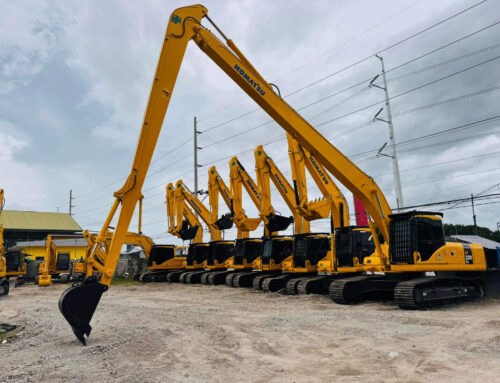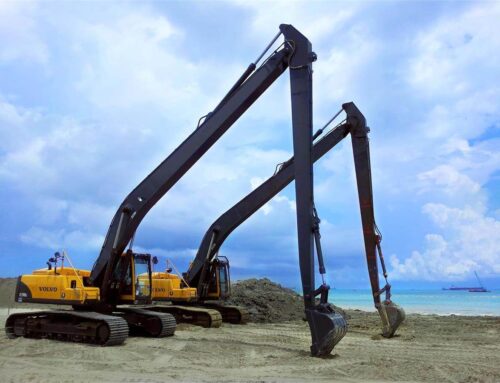Recently, many customers told us that they bought a second-hand excavator online, but there were many problems after buying it, and it could not be used normally. The purchase cost was very high, and the maintenance cost was also very high, which brought them a lot of losses. Today we will tell you what issues to pay attention to when buying a second-hand excavator.
When purchasing a second-hand excavator, it’s essential to pay close attention to several factors that could significantly impact the machine’s performance, safety, and overall value. Here’s a comprehensive guide to help you navigate the complexities of buying a used excavator, focusing on potential hazards and the necessary checks to ensure a worthwhile investment.
Understanding the Importance of a Thorough Inspection
Buying a second-hand excavator can be a cost-effective decision, but it comes with its set of risks. Unlike new equipment, used excavators may have wear and tear that could lead to costly repairs or unsafe operating conditions. Therefore, conducting a thorough inspection is crucial.
Key Issues and Safety Hazards to Consider
-
Mechanical and Structural Integrity
Undercarriage Inspection: The undercarriage bears significant wear and tear. Check for worn sprockets, damaged track pads, loose chains, and the condition of the track tensioning system. Use a measuring tool to check the remaining life of tracks and undercarriage components.
Boom and Arm Check: Examine the boom and stick for any signs of cracks, repairs, or unusual welds that could indicate structural failures. Check the pins and bushings for excessive play or wear.
Hydraulic System: Hydraulic issues can be costly to repair. Look for leaks, damaged hoses, and worn cylinders. Test the hydraulic pump’s efficiency by observing the machine’s response time to control inputs and checking for any unusual noises.
-
Engine and Powertrain
Engine Health: Start the engine to check for any unusual smoke or noises. Blue smoke indicates oil burning, while excessive white smoke could suggest coolant issues. Review service records to ensure regular maintenance.
Transmission and Drive: Listen for any abnormal sounds from the transmission. Test the excavator’s movement in all gears and check for smooth transitioning.
-
Electrical Systems
Wiring and Controls: Inspect all wiring for signs of wear, corrosion, or damage. Check the functionality of the dashboard, lighting, and all electronic controls. Non-functional components might indicate deeper electrical troubles.
-
Safety Features
ROPS (Roll-Over Protection Structure): Ensure the ROPS is not compromised. Any deformation or previous repairs could affect its effectiveness in a rollover accident.
Safety Labels and Manuals: Verify that all safety labels are intact and legible. The presence of operator manuals and maintenance logs can provide insights into the machine’s upkeep and potential issues.
-
Attachments and Tools
Bucket and Other Attachments: Check for cracks, wear, or built-up stress in attachment points. Ensure that any included attachments are suitable for the work you intend to perform and are in good working condition.
-
General Wear and Tear
Cabin Condition: Inspect the operator’s cabin for ergonomic integrity. Check for visibility issues, seat condition, and general comfort.
Paint and Rust: While cosmetic issues are not the most critical, excessive rust can be a sign of neglect or poor storage conditions. Fresh paint might be covering up significant problems.
Performing Operational Tests
Before finalizing your purchase, conduct operational tests. Operate the excavator through a typical range of motions and tasks. This can reveal issues with engine performance, hydraulic operations, and joint movement that are not visible during a static inspection.
Professional Inspections and Maintenance History
Where possible, enlist the help of a professional mechanic to inspect the excavator. Professionals can often spot issues that untrained eyes might miss. Additionally, a well-documented maintenance history can be a significant indicator of the excavator’s condition. A machine with irregular or missing service records might pose higher risks and future costs.
Legal and Compliance Checks
Ensure the excavator meets all local safety and emission regulations. Verify the legitimacy of the ownership and any potential liens against the machinery to avoid legal complications.
Conclusion
Investing in a second-hand excavator requires diligence and attention to detail. By focusing on the critical areas mentioned, conducting thorough checks, and possibly consulting with a professional, you can make an informed decision that ensures safety, efficiency, and value for your investment. Remember, cutting corners in the inspection process can not only lead to increased operational costs but also severe safety risks.






Leave A Comment